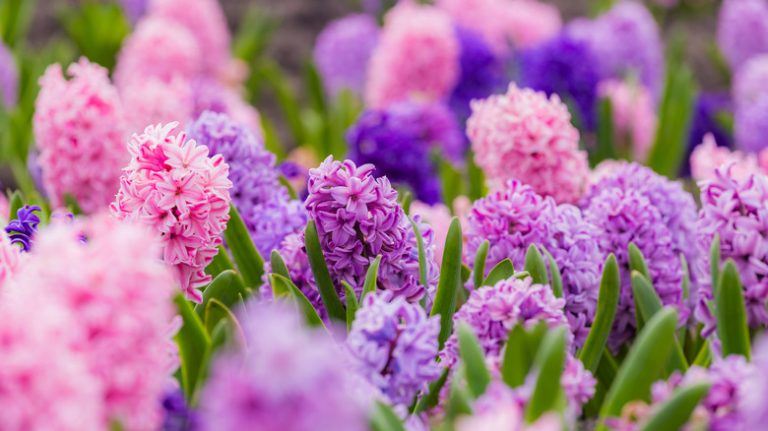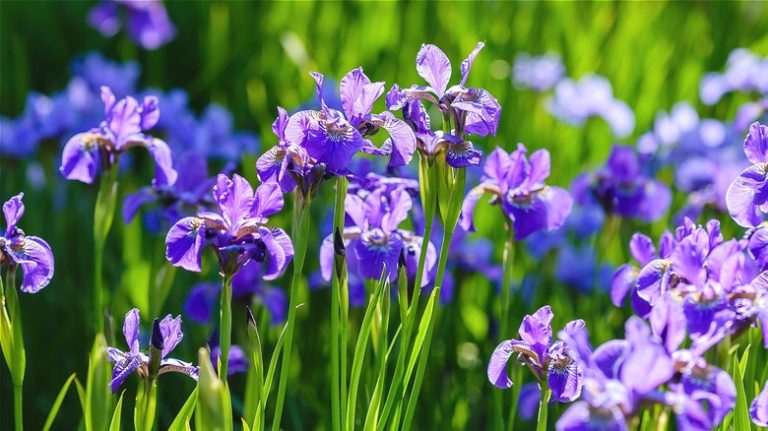When we think of marigolds, we often picture them as beautiful flowers in vibrant shades of orange and yellow. However, did you know that marigolds can also be a delightful addition to your dinner table? In French cuisine, marigolds are commonly used in recipes, providing a good source of flavor and more.
Marigolds, especially the leaves and petals, are best used when they are still fresh and in bloom. If you’re a avid gardener, you can easily grow marigolds and use them in salads or as a colorful display on your dinner plates. What’s more, marigolds can be collected in the wild, as they are abundant in many parts of the world.
There are many ways to incorporate marigolds into your meals. For example, you can use marigold petals to decorate cheese, giving it a vibrant and natural coloring. Marigold leaves can be infused into drinks or used as a flavorful addition to tofu dishes. The possibilities are endless!
It’s important to note that not all marigold plants are edible. The most commonly recommended variety for culinary use is the Calendula officinalis, also known as pot marigold. This particular plant gives a slightly sweet and slightly spicy flavor to dishes, making it a popular choice among chefs.
So next time you’re looking to add a touch of brilliance to your dinner, why not consider using marigolds? Whether you’re a seasoned chef or a novice in the kitchen, marigolds can provide a unique twist to your favorite recipes. From salads to drinks, marigolds are a versatile ingredient that will surely impress your guests and delight your taste buds.
In addition to their culinary uses, marigolds also have a long history of being used in various cultural traditions. For example, marigolds are often used as part of the Day of the Dead altar in Mexican culture. The bright and vibrant petals of marigolds are believed to guide the spirits of the deceased back to their loved ones. It’s a beautiful and symbolic tradition that highlights the importance of marigolds in Mexican culture.
So whether you’re a fan of marigolds for their culinary value or you appreciate their cultural significance, there’s no denying that marigolds are much more than just a pretty flower. So the next time you see marigolds growing in your garden or spot them at a local market, don’t hesitate to pick some up and get creative in the kitchen!
How to eat marigold leaves and flowers
Marigolds, or Calendula officinalis, are not only beautiful flowers but also have many uses in the kitchen. In this article, we will explore how to eat various parts of the marigold plant, including the leaves and flowers.
When it comes to marigolds, we can eat the whole plant. The leaves and flowers of marigolds can be eaten both raw and cooked, providing a unique flavor and adding a touch of color to our dishes.
Let’s start with the flowers. Marigolds bloom in vibrant shades of orange and yellow, making them perfect for decorating salads and other dishes. The petals can be used to garnish salads, sandwiches, or even desserts. They’re also popularly added to teas and infusions, giving them a subtle, floral flavor.
As for the leaves, marigold leaves are often used in cooking, especially in French cuisine. They can be added to soups, stews, and sauces, providing a slightly bitter and herbal taste. Some people also enjoy adding marigold leaves to omelettes or scrambled eggs for an extra kick of flavor.
If you’re looking to experiment with marigold leaves and flowers, here are a few recipe ideas:
- Marigold-infused tequila: Soak marigold flowers in a bottle of tequila for a few days to infuse the spirit with a floral flavor.
- Marigold tofu balls: Mix marigold leaves and flowers with tofu, shape them into small balls, and cook them in a pot. This is a delicious vegan alternative to traditional meatballs.
- Marigold salad: Toss marigold petals with your favorite salad ingredients for a colorful and flavorful addition to your meal.
- Marigold cheese: Mix marigold petals with soft cheese and spread it on bread or crackers for a unique and tasty snack.
These are just a few examples of how you can enjoy marigold leaves and flowers in your food. The possibilities are endless, so don’t be afraid to get creative in the kitchen!
Please note that not all marigold varieties are edible, so make sure you are using Calendula officinalis, commonly called the pot marigold or English marigold. Also, if you are allergic to ragweed or daisies, you may want to avoid consuming marigolds, as they belong to the same family of plants.
Whether you’re a seasoned cook or a beginner gardener, incorporating edible marigolds into your dishes can provide you with a collection of unique ingredients and benefit your health. So go ahead and give marigold leaves and flowers a try!
Calendula officinalis and Calendula arvensis as two edible wild plants
When it comes to edible flowers, we’ve often heard of marigolds. However, there are two specific types of marigolds, Calendula officinalis and Calendula arvensis, that are not only beautiful to look at but also delicious to eat. These wild plants can be incorporated into various recipes, both savory and sweet.
Both Calendula officinalis and Calendula arvensis bloom with bright and vibrant flowers. The petals of these marigolds can be collected and used in cooking. They have a slightly citrusy flavor, which makes them a great addition to salads, teas, and even cocktails. In fact, marigold petals can be used to add a unique taste and bright color to drinks like lemonade or tequila.
What’s interesting about these marigold plants is that not only their petals are edible, but other parts of them can also be consumed. Calendula officinalis is often used to make ointment and calendula oil, while Calendula arvensis is sometimes referred to as the “wild marigold” and its dark leaves can be used as a coloring agent in food.
To grow these marigolds, they can be planted in gardens just like any other plant. They are hardy and can withstand frost, making them suitable for various climates. Once they bloom, you can harvest the petals and use them in your favorite recipes.
Here are a few examples of how you can incorporate these edible marigolds into your meals:
- Add Calendula officinalis petals to a salad for a vibrant and flavorful twist.
- Use Calendula arvensis petals to garnish dishes, giving them a pop of color.
- Cook Calendula officinalis petals in a pot of soup or stew to infuse their unique taste.
- Include Calendula arvensis petals in desserts, such as cakes or muffins, for an unexpected flavor.
These two types of marigolds, Calendula officinalis and Calendula arvensis, offer not only a beautiful display in gardens but also a delicious addition to your food. Their edible petals and other parts provide a good content of flavor and are recommended for those looking to try something unique.
Are marigolds edible wild plants
Marigolds, also known by their scientific names Calendula officinalis and Tagetes arvensis, are not only beautiful flowers to look at but also have several edible uses. While marigolds are commonly planted in gardens for their brilliant coloring and to encourage the growth of other plants, they can also be found growing wild in certain areas.
When collected from the wild or from gardens, the flowers of marigolds can be used in various ways in cooking and other preparations. The petals of the marigold flowers can be added to salads, used to decorate cakes and other desserts, or to infuse flavor into drinks. They can also be dried and used to make herbal infusions or ointments.
Marigolds have a unique flavor that is often described as being slightly citrusy or tangy. This flavor can add a touch of excitement to salads, fruit dishes, and recipes that call for herbs. In French cooking, marigolds are sometimes referred to as “salad balls” and are used to provide a burst of flavor and color to dishes.
Not all parts of the marigold plant are edible. It is generally recommended to only consume the petals of the flower and avoid consuming the stems, leaves, or other parts. In some cultures, marigolds are also used as offerings on small altars or display gardens as part of religious or cultural practices.
Marigolds are also known for their medicinal properties. They have been used in traditional medicine to treat various ailments, including skin infections and digestive issues. Some studies have suggested that marigold infusions or ointments made from the flowers may have anti-inflammatory and antimicrobial effects.
In addition to their culinary and medicinal uses, marigolds can also benefit gardens and encourage the growth of other plants. Their strong fragrance is known to repel certain pests, making them a popular companion plant. Marigolds are often planted alongside vegetables like tomatoes and peppers to help deter insects and ward off diseases.
So, whether you are looking to add a splash of color to your dinner plate or to keep your garden healthy and pest-free, marigolds are a versatile and beneficial plant to consider. From their beautiful blooms to their edible petals, marigolds provide a whole range of uses and flavors to explore.
What parts of these plants can we eat
Marigolds are often grown for their bright, colorful flowers that add a pop of color to gardens and bouquets. However, what many people don’t realize is that most parts of these plants are edible and can be a unique addition to our meals.
When it comes to marigolds, the flowers are the main edible part. The petals of the marigold flower can be used to decorate salads, desserts, or even added to drinks for a touch of exotic flavor. The petals have a slightly tangy and citrus-like taste, which is why they’re often used to give a lemony flavor to dishes. You can also collect the petals and use them to make marigold jelly, adding to the versatility of these edible flowers.
But it doesn’t stop there. The leaves of the marigold plant can be used as an herb in cooking, much like other herbs such as basil or thyme. The leaves have a strong, slightly bitter flavor that adds depth to dishes. They can be added to soups, stews, or even used as a topping for pizzas.
Additionally, the marigold plant produces small, dark seeds that are edible as well. These seeds can be collected and used in various recipes. They have a nutty flavor and can be roasted or added to baked goods, giving them a unique twist.
So, whether it’s the flowers, leaves, or seeds, marigolds have a surprising amount of edible parts that can be incorporated into our meals. They’re not just a feast for the eyes, but they can also benefit our taste buds and give a special touch to our culinary creations.
Keep in mind that not all marigold varieties are edible, so it’s important to know which ones are safe to consume. The calendula marigold, also known as pot marigold, is the most commonly grown edible variety. So, if you’re planning to grow marigolds for food, make sure to choose the right type.
In conclusion, marigolds are more than just pretty flowers in the garden. They have a collection of edible parts, from the flowers to the leaves and seeds, that can be used in various recipes. So why not give them a try and enjoy their unique flavor and benefits?



